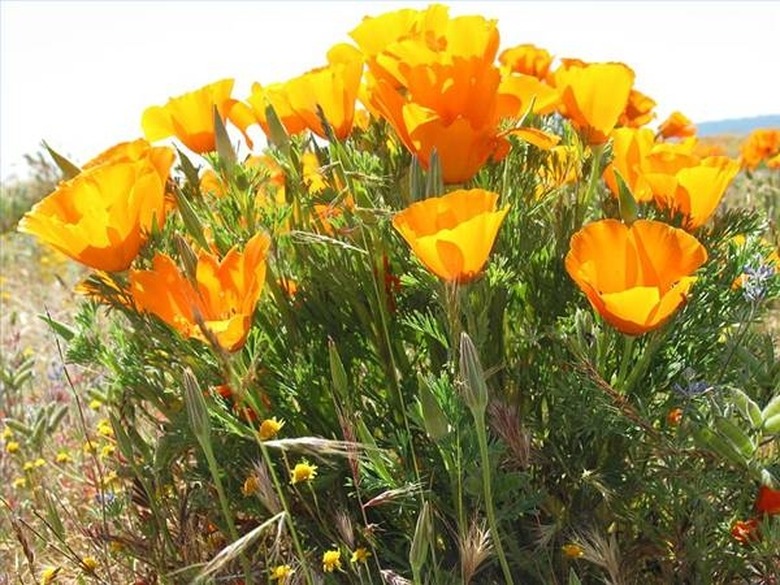Growing Poppies Indoors
Introduction
Introduction
Poppy is the common name for wildflowers in the Papaveraceae family, which includes many different genera. While the opium poppy (Papaver somniferum) is the source of several opiate narcotics and is illegal to grow or possess in the United States, other species–like the California poppy (genus Eschscholzia)–are popular for their distinct orange flowers. They are quite common in flower gardens and residential landscaping. Other poppies have white, pink, yellow, red, or blue bowl-shaped flowers of 4 to 6 petals. Most poppy flowers grow one per stem, and they come from tiny black seeds. Poppies exist in annual, biennial and perennial varieties, and they are usually considered relatively easy to grow.
Growing Poppies Indoors
Growing Poppies Indoors
There is some debate, however, over whether poppies can be reliably grown indoors. The perennial species, in particular, tends to need a full cycle of dormancy that the seasons and regular days and nights provide, but an indoor environment can often be unable to supply that environment. If sprouting poppies indoors, use small peat pots with a few seeds in each to increase the chance of viability. Germination usually takes 20 days.
Another challenge to indoor cultivation is that poppies are a hearty, drought-resistant plant that prefers full sun but cool temperatures, which can be difficult to provide inside. Because regulating light and temperature for germination can be difficult indoors, though, it's suggested that poppy seeds are easier to sprout outdoors and bring inside after they've sustained vegetative growth. Placing poppies on a window sill–particularly one with a southern exposure–will help them get the natural sun they need to thrive.
Caring for Poppies Indoors
Caring for Poppies Indoors
Once established, poppies can grow rather quickly given the right conditions. Their soil should be slightly acidic and well-drained. They should receive full to sun to partial shade, but they should not be exposed to sweltering heat. A general purpose fertilizer can be applied once each month to accelerate growth up to a height of 1 to 2 feet. Depending on the variety, poppies will bloom in early to mid summer, or 65 to 90 days from planting.
Pinching off mature flowers helps promote new blooms. However, if harvesting seeds, allow the flowers to die and desiccate on their own. Cut off the seed pods and and allow them to dry completely, at which point it is possible to separate the seeds from the seed pod for replanting. You can also use it as bird feed or in recipes.
